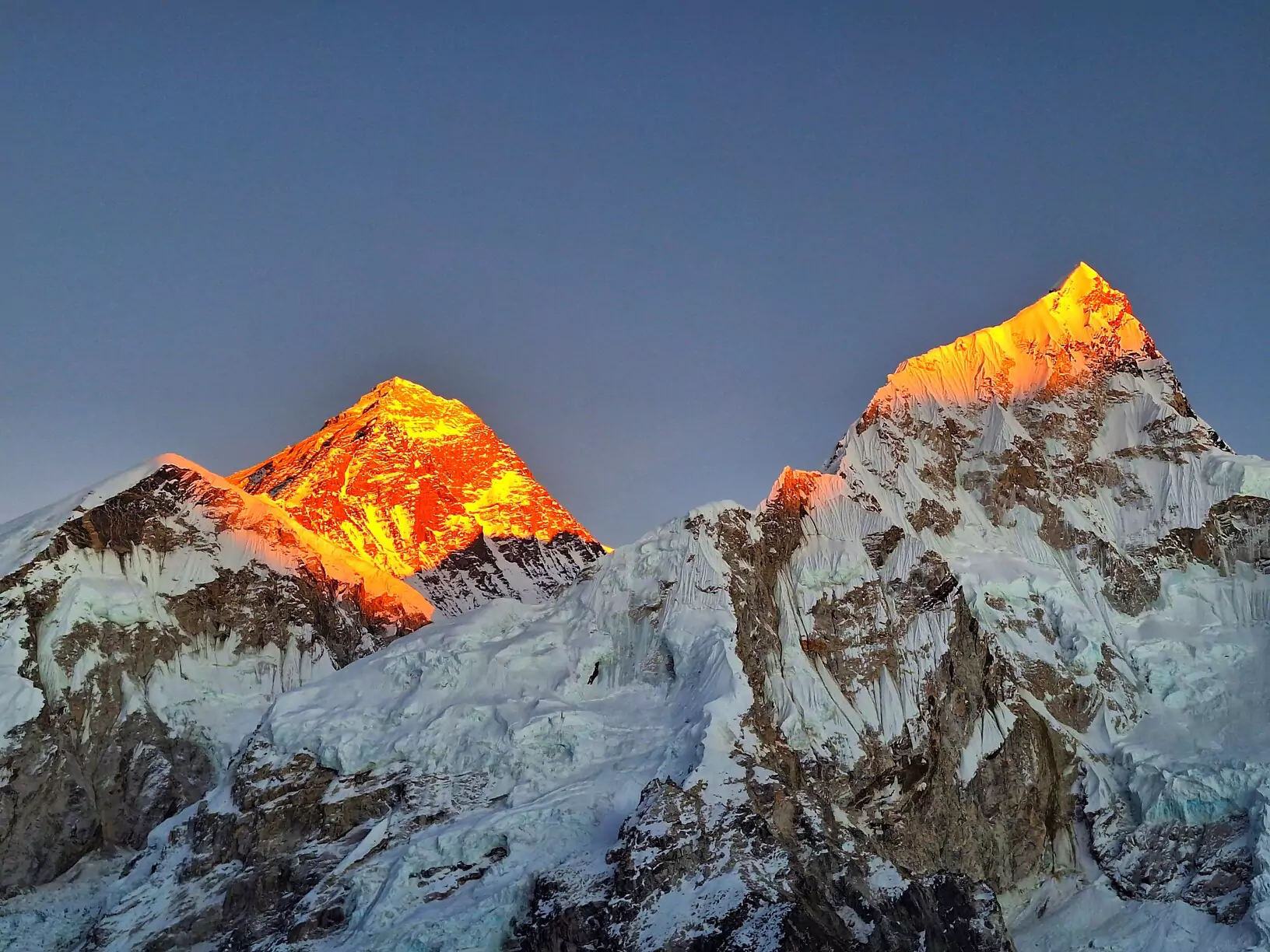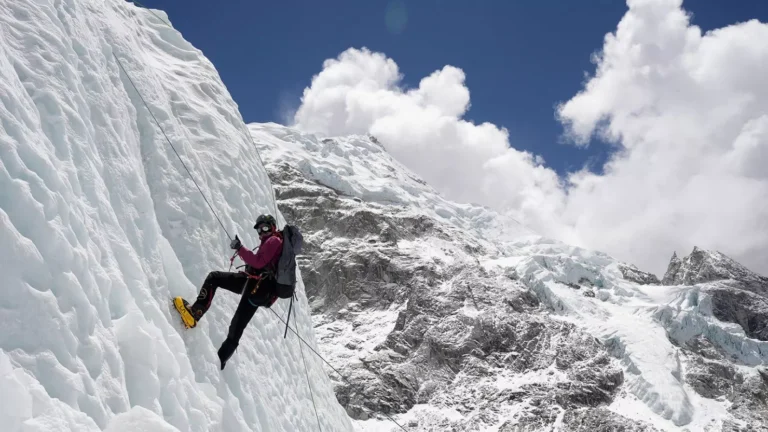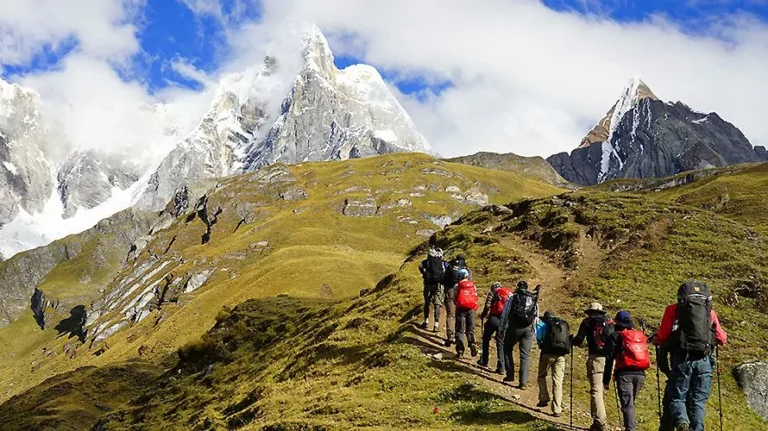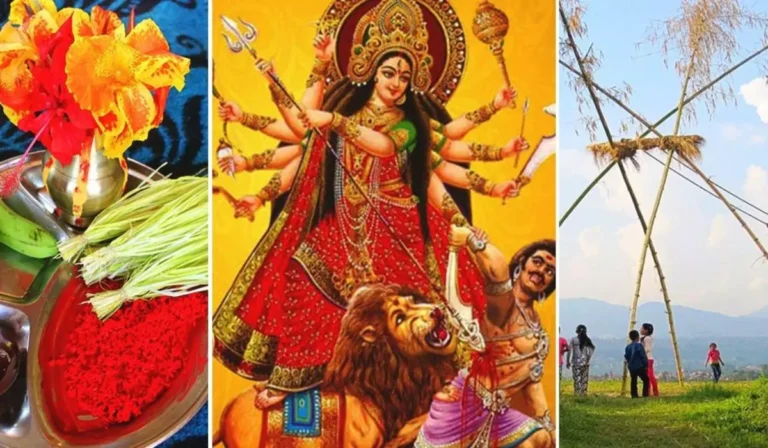- PUBLISHED
How Long Does It Take to Climb Everest?

Climbing Mount Everest is considered one of the greatest achievements in mountaineering. At 8,848.86 meters, Mt Everest challenges climbers with extreme altitude, unpredictable weather, and difficult terrain. Understanding how to climb Everest involves more than just physical strength,technical skills, and knowledge of the safest and most popular Everest climbing routes. These factors are critical to increase your chances of a successful and safe ascent.
This guide explains how long it takes to climb Mount Everest, covering detailed expedition timelines, the best seasons for a Everest Climbing, and important factors affecting the length of your journey. You’ll also get insights into the popular Everest climbing routes and the duration of the famous Everest Base Camp trek.
How Long Is an Everest Expedition?
The duration of a typical Mt Everest submit climbing usually spans around two months. The main factor influencing this lengthy timeline is the critical process of acclimatization, which allows climbers to gradually adjust to the high altitude and reduced oxygen levels encountered on the ascent. Proper acclimatization is essential to minimize risks such as altitude sickness and to ensure climbers can safely progress through the various camps on the mountain.
During the Everest expedition, climbers spend several days moving between Base Camp and higher camps, resting and acclimatizing to the extreme environment. This careful pacing helps your bodies adapt to the harsh conditions, increasing the likelihood of a successful summit. Overall, a well-structured Everest expedition includes plenty of rest days and acclimatization rotations, making the entire journey to the top and back take roughly 60 to 70 days.

Typical Mount Everest Expedition Timeline
A typical Everest expedition consists of carefully planned phases including arrival, trekking to Base Camp, and extensive acclimatization through rotations at higher camps to prepare the body for extreme altitude. Climbers then wait for a favorable weather window to make their summit attempt. The process ensures safety and increases the chances of a successful ascent and return.
Arrival and Trek to Base Camp
The expedition usually begins with arrival in Kathmandu, where climbers spend 1 to 2 days completing administrative tasks such as securing permits and assembling gear. Following this, the team flies to Lukla, the gateway to the Everest region. From Lukla, a gradual trek of approximately 7 to 10 days through picturesque Sherpa villages takes climbers up to Everest Base Camp, located at 5,364 meters (17,598 feet). This trek itself is an essential part of initial acclimatization, helping climbers adjust to the increasing altitude at a manageable pace.
Base Camp Acclimatization
Once at Base Camp, climbers spend around 4 to 6 weeks undertaking multiple rotations to higher camps to properly acclimatize. These rotations typically involve climbing from Base Camp to Camp 1 at about 6,000 meters, then returning to Base Camp to rest.
Afterward, climbers ascend to Camp 2 (6,400 meters) and return again. Some rotations might extend further to Camp 3 (7,200 meters) before descending back to Base Camp for recovery. This repetitive process allows the body to gradually adapt to the thin, oxygen-poor air at high elevations, which is critical to minimizing altitude sickness and ensuring physical readiness for the summit push.
Weather Wait
After the acclimatization rotations, climbers often face a waiting period at Base Camp or at Camps 1 or 2 for a suitable weather window. This summit window usually occurs in late May, when the winds tend to be calmer and conditions safer for the final ascent. However, weather on Everest is notoriously unpredictable; high winds, storms, or jet-stream disturbances can delay the climb by several days or even weeks. This waiting period requires patience and mental resilience as climbers remain ready for a sudden go-ahead to attempt the summit.
Being prepared with the right gear and understanding how to handle challenging weather conditions, like hiking in the rain, can make a significant difference in safety and comfort.
Summit Push (~5–7 Days)
When a favorable weather window opens, climbers embark on the final summit push, which generally takes about 5 to 7 days and is divided into multiple stages:
- From Base Camp to Camp 2, climbers cross the challenging Khumbu Icefall, a treacherous section of moving ice, typically taking 1 to 2 days.
- Next, they ascend the steep Lhotse Face to reach Camp 3 at around 7,200 meters, usually completed in one day.
- The journey continues across the Geneva Spur to Camp 4 on the South Col (7,920 meters), also taking about one day.
- From Camp 4, the final summit attempt typically begins around midnight. Climbers ascend the Southeast Ridge, passing key landmarks such as the Balcony, South Summit, and the famous Hillary Step before reaching the summit in the early morning hours.
- Reaching the summit at 8,848.86 meters is the ultimate achievement, but climbers spend only a few minutes there due to the dangerously thin air and limited oxygen. During this brief time, they take quick photos, hydrate, and admire the breathtaking panoramic views, knowing that longer stays increase risks like frostbite, exhaustion, and altitude sickness.
- After a brief summit celebration, climbers descend quickly to limit time in the “death zone.” The descent is as dangerous as the climb due to fatigue, poor visibility, and difficult terrain, requiring focus until reaching Camp 4.
- Finally, climbers continue descending from Camp 4 through Camp 2 and carefully cross the Khumbu Icefall to Base Camp. This descent usually takes 2 to 3 days and requires great caution and stamina.
Descent and Return
Once safely back at Base Camp and after concluding necessary wrap-up activities, climbers begin the trek out of the region. The return trek typically takes around 3 to 4 days, passing through Namche Bazaar and Lukla before flying back to Kathmandu. Most expeditions arrive back in Kathmandu by around day 60, allowing climbers some rest and recovery time. It is common to spend an additional buffer day in Kathmandu before heading home to accommodate any unexpected delays or flight changes.
How long is the Everest Base Camp trek?
The Everest Base Camp trek stands as one of the world’s most renowned multi-day hiking adventures. This remarkable journey through the towering Himalayan peaks not only tests your physical endurance but also immerses you in breathtaking natural beauty while helping you discover your own resilience. Our 15-day Everest Base Camp trek takes you deep into the Himalayas, providing spectacular views of Mount Everest and an experience that will stay with you forever.
While there are multiple routes to reach Everest Base Camp, the classic and most frequented trail starts in Lukla, widely known as the gateway to Everest and follows the scenic Khumbu Valley. Praised by Lonely Planet as a premier travel destination, this trek leads you through picturesque Sherpa villages like Phakding, Namche Bazaar, Tengboche, Dingboche, Lobuche, Kalapathar, and Gorak Shep, each offering a unique glimpse into the region’s culture and lifestyle.
For anyone planning a trek in Nepal, proper preparation is key. Learning how to pack a trekking backpack efficiently can make a big difference on your journey. Nepal offers many incredible routes besides Everest Base Camp, including some of the top treks in Nepal that highlight the country’s diverse landscapes and cultural heritage.

Factors Affecting Expedition Length
Several key factors can make an Everest climb take longer or shorter:
- Weather conditions: Everest’s weather is very unpredictable. Climbers often wait for a short “weather window” (usually in mid-May) when winds calm down. If storms or strong winds continue, summit attempts get delayed, sometimes by days or even weeks. So, it’s important to plan extra days for possible weather delays.
- Climber fitness and experience: Experienced and fit climbers usually acclimatize faster and recover better. Beginners or those less fit may need extra rest between climbs, slowing down the schedule.
- Acclimatization: Adjusting to high altitude takes time. Most climbers spend weeks acclimatizing to avoid altitude sickness. Any illness or altitude problems may force climbers to descend and start over, adding days. Some climbers use altitude tents before the expedition to reduce time needed on the mountain.
- Logistics and permits: Getting permits and organizing travel can add days. In Nepal, permits are expensive and paperwork must be done before the climb. On the Tibet side, visas and permits also add processing time. Helicopter flights can speed up travel but depend on weather.
- Crowding: Busy seasons bring many climbers, causing traffic jams, especially at tricky spots like the Hillary Step. Long waits on summit day are common, which can add hours or days to the expedition.
- Guidance and support: Most climbers join guided expeditions with Sherpa support. Sherpas help fix ropes and carry loads, which speeds things up. However, large teams require coordination that can slow progress. Solo climbs without support are very rare and usually slower.
Overall, these factors combined determine how long a climber’s Everest expedition will take.
Best Time to Climb Mount Everest
The best time to climb Mount Everest is during the spring season, from March to May. During this period, the weather becomes warmer, skies are mostly clear, and wind speeds are lower, providing safer and more comfortable climbing conditions. Many climbers prefer this season because it offers the best chance for a successful Mt Everest climbing with stable weather and beautiful natural scenery along the route.
Autumn, from September to November, is also a good season to attempt the climb. After the monsoon rains, the weather stabilizes with dry days and cool temperatures, making it suitable for climbing. These two seasons are considered the safest and most popular windows for tackling the Everest climbing routes.
Summer and winter, however, bring dangerous weather conditions such as heavy rain, avalanches, extreme cold, and severe storms, so climbers generally avoid expeditions during these times on Mt Everest.

Conclusion
Expedition to Mount Everest is an incredible journey that challenges your physical limits while rewarding you with some of the most stunning natural scenery in the world. This adventure offers not only breathtaking Himalayan views but also a deep connection to the local culture and the spirit of exploration. Proper preparation, fitness, and mindset are essential to fully enjoy and safely complete this once-in-a-lifetime experience.
Specializing in hiking, trekking, and peak climbing adventures across Nepal, BeThere is a reliable trekking agency offering expert guides and strong local support. It ensures a safe and memorable experience while exploring the majestic Himalayas and is the perfect choice to help make your mountain dreams come true.
Table of Content
Frequently Asked Questions
Why does it take around two months to climb Mount Everest?
Climbing Mount Everest typically takes about 60 to 70 days because climbers need ample time for acclimatization to adjust to high altitude and low oxygen levels. This process helps prevent altitude sickness and prepares the body for the challenging climb through various camps.
Can the average person climb Everest?
While climbing Mt Everest is possible for people with strong physical fitness, technical skills, and proper training, it is not recommended for beginners without experience in high-altitude mountaineering. Guided expeditions and preparation are essential for safety.
What is the “death zone” on Everest?
The “death zone” refers to altitudes above 8,000 meters (26,247 feet) on Everest climbing routes, where oxygen levels are too low for humans to survive for long periods without supplemental oxygen, increasing risks of severe altitude sickness and other dangers.
Why can't you climb Everest in the summer?
Summer on Mt Everest is avoided due to heavy rainfall, high humidity, increased avalanche risk, poor visibility from fog and clouds, and unstable snow conditions, making the climb very dangerous.
What is the maximum age to climb Everest?
There is no strict maximum age to climb Mount Everest, but climbers typically need to be in excellent health and physical condition. Many climbers successfully summit in their 60s or even 70s with proper training and medical clearance.
How do climbers prepare for the summit push?
Climbers undergo multiple rotations between Base Camp and higher camps to acclimatize, wait for a suitable weather window, and then make a carefully planned summit push, often starting at midnight to avoid harsh daytime conditions.
What are the popular routes for climbing Mount Everest?
The most popular Everest climbing routes are the Southeast Ridge route from Nepal and the North Ridge route from Tibet, both requiring technical skills and proper acclimatization.
Need help choosing a trail?
Connect with a local and plan your perfect trek.



